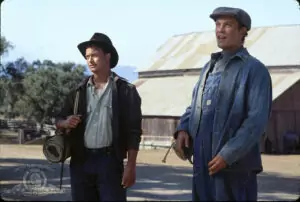“Huron Indian myth has it that in ancient times, when the land was barren and the people were starving, the Great Spirit sent forth a woman to save humanity. As she traveled over the world, everywhere her right hand touched the soil, there grew potatoes. And everywhere her left hand touched the soil, there grew corn. And when the world was rich and fertile, she sat down and rested. When she arose, there grew tobacco . . .”
(Borio, Gene)

✅ AI Essay Writer ✅ AI Detector ✅ Plagchecker ✅ Paraphraser
✅ Summarizer ✅ Citation Generator
Tobacco is used globally as a stimulant drug by countless people. However, it was not always this way. Native Americans have used tobacco in various practices for eons. In their culture, it was never associated with being an addictive substance. Rather, tobacco was employed in religious ceremonies, as a gift, invitations, peace treaties, and bargains.
Native Americans comprise many cultures and tribes; however, the religious ceremonies connected to tobacco are usually common among the native nations. According to the website Indian Country Wisconsin, “…tobacco is the unifying thread of communication between humans and the spiritual powers. The manidog (spirits) are said to be extremely fond of tobacco and that the only way they could get it was from the Indians, either by smoke from a pipe or by offerings of dry tobacco. According to tradition, the Indians received tobacco as a gift from Wenebojo who had taken it from a mountain giant and then given the seed to his brothers” (“Ceremonial Use of Tobacco”). These types of offerings showed in various activities. For instance, “Dry tobacco was placed at the base of a tree or shrub from which medicine was gathered, and a pinch was thrown in the water before each day of wild rice gathering to assure calm weather and a bountiful harvest. Before setting out in a canoe, a safe return was assured by offering tobacco on the water. On journeys or hunts, Indian men paused for a smoke and left a pinch of tobacco as an offering when they encountered certain features of the landscape, including waterfalls, misshapen trees, oddly shaped rocks, and lakes or islands said to harbor spirits” (“Ceremonial Use of Tobacco”). These religious uses, and many more, were common (and still are) in Native American culture.
Tobacco was often employed as a gift as well. For example, shamans often accepted tobacco when a client wanted see to him or her. Also, “Requests to elders to relate oral traditions or other special knowledge were accompanied with a gift of tobacco” (“Ceremonial Use of Tobacco”). And in more of a general sense, “A gift of traditional tobacco is a sign of respect and may be offered when asking for help, guidance, or protection” (“Traditional Tobacco”).
Gifts and invitations sometimes go hand in hand. In fact, “The universal method of inviting people to feasts or notifying them of ceremonies was the delivery of a small amount of dry tobacco by a runner sent out for that purpose” (“Ceremonial Use of Tobacco”). So, instead of a card, Native Americans saw the tobacco plant as fit for this purpose.
The famous “peace pipe” is known worldwide. According to Museon, “The white colonists were mainly aware of the role of the pipe in sealing peace agreements. So the pipe became known to us as the ‘peace pipe’. To ‘offer the peace pipe’ to somebody means to try to patch up a quarrel. To ‘smoke the peace pipe’ with somebody means to make up after a fight and establish peace again” (“Smoking the Peace Pipe”). Basically, tobacco was and still is a tool for diplomatic relations in Native American culture.
Lastly, tobacco has common use in bargaining. In order to seal business agreements, a pipe filled with tobacco was passed around between participants. These agreements were normally between leaders of tribes (“Ceremonial Use of Tobacco”).
The tobacco industry is giant and the plant is usually perceived as a stimulant drug. However, in ancient times and still today, Native Americans saw tobacco as a sacred gift from the gods for religious ceremonies, giving gifts, sending invitations, initiating peace treaties, and reaching agreements.
Works Cited
“Ceremonial Use of Tobacco.” Ceremonial Use of Tobacco – Indian Country Wisconsin, www.mpm.edu/content/wirp/ICW-166.html.
“Traditional Tobacco.” Traditional Tobacco | Keep It Sacred, keepitsacred.itcmi.org/tobacco-and-tradition/traditional-tobacco-use/.
Borio, Gene. “Tobacco.org.” No Title, archive.tobacco.org/History/Tobacco_History.html.
“Smoking the Peace Pipe.” Smoking the Peace Pipe | Museon, www.museon.nl/en/smoking-peace-pipe.
Follow us on Reddit for more insights and updates.




Comments (0)
Welcome to A*Help comments!
We’re all about debate and discussion at A*Help.
We value the diverse opinions of users, so you may find points of view that you don’t agree with. And that’s cool. However, there are certain things we’re not OK with: attempts to manipulate our data in any way, for example, or the posting of discriminative, offensive, hateful, or disparaging material.